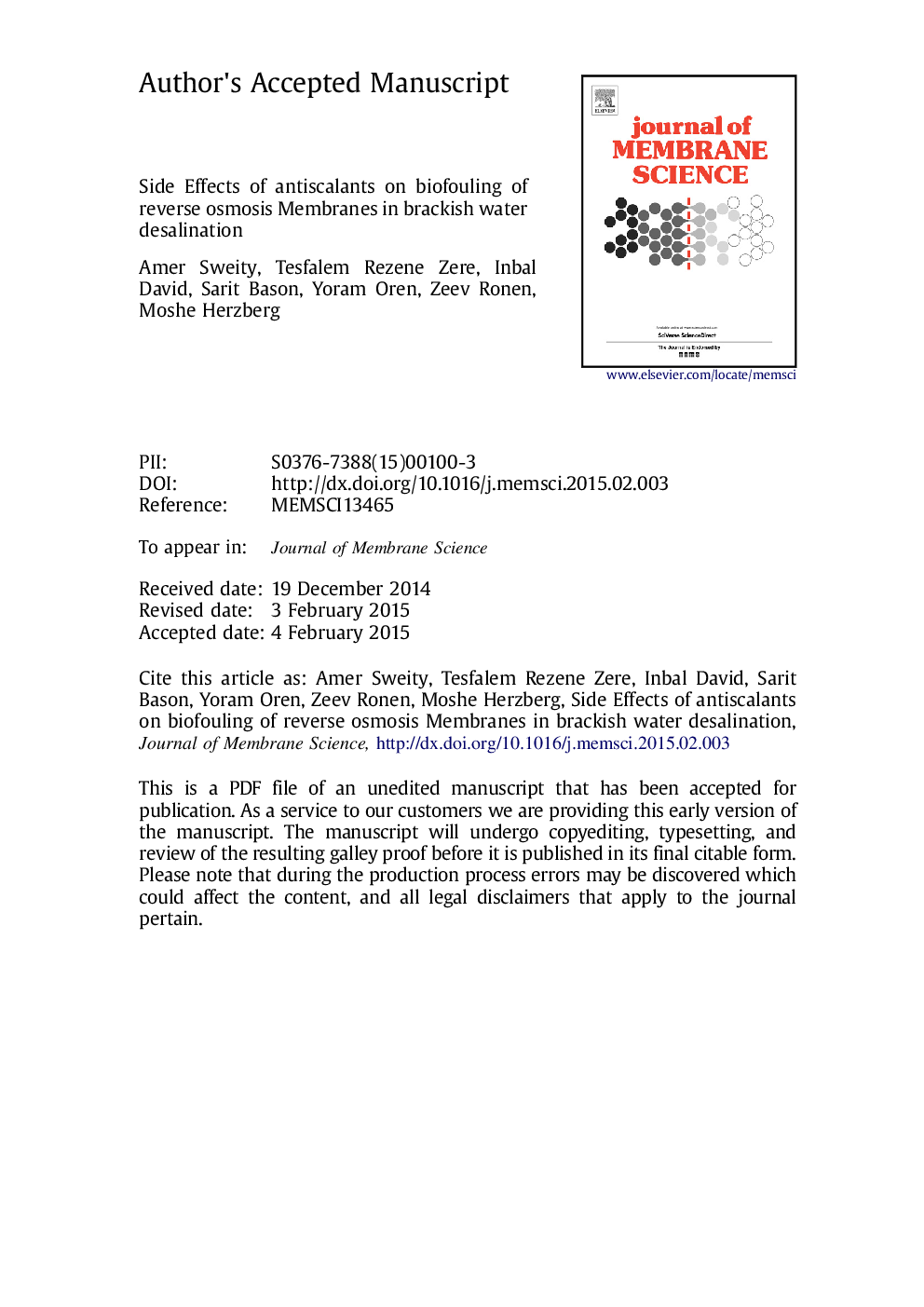| کد مقاله | کد نشریه | سال انتشار | مقاله انگلیسی | نسخه تمام متن |
|---|---|---|---|---|
| 7021513 | 1456018 | 2015 | 51 صفحه PDF | دانلود رایگان |
عنوان انگلیسی مقاله ISI
Side effects of antiscalants on biofouling of reverse osmosis membranes in brackish water desalination
ترجمه فارسی عنوان
عوارض جانبی ضد انفجار در بروز زخم های غشاء اسمز معکوس در شیرین کاری آب شور
دانلود مقاله + سفارش ترجمه
دانلود مقاله ISI انگلیسی
رایگان برای ایرانیان
کلمات کلیدی
بیوفولینگ، ضد انفجار، اسمز معکوس، نمک زدایی، آب مرطوب
موضوعات مرتبط
مهندسی و علوم پایه
مهندسی شیمی
تصفیه و جداسازی
چکیده انگلیسی
In this study, we investigated the contribution of antiscalants to biofouling of reverse osmosis (RO) membranes in brackish water desalination process. Both the physico-chemical effects of the antiscalants on the initial attachment of bacterial cells to RO membrane surfaces, as well as their nutritional contribution to biofilm growth were analyzed. A bacterial deposition experiment on ESPA-2 RO membrane was conducted using Pseudomonas fluorescens, and the two polyphosphonate- and polyacrylate-based antiscalants. Both the model bacterium and the ESPA-2 RO membranes were treated with feed brackish water with and without antiscalants. The nutritional contribution of these antiscalants to biofilm growth was investigated by growing biofilms in packed-bed biofilm reactors in the presence and absence of the antiscalants. In the presence of both antiscalants, biofilm development was enhanced in comparison to the control. Eventually, the impact of the antiscalant-induced biofilm growth on the performance of RO membranes was investigated in a crossflow RO filtration unit under typical brackish water desalination conditions. Significant membrane biofouling was detected in the presence of the antiscalants compared to the case where no antiscalant was used, accompanied by higher flux decline and salt passage. RO membrane modules were also utilized in an industrial and pilot desalination plants to test the effect of the polyacrylate-based antiscalant. Similar behavior was observed on both scales of membrane operation, with polyacrylate inducing biofilm growth. We assert that the two types of antiscalant induce biofilm formation on RO membrane surfaces through two different mechanisms: while polyacrylates increase bacterial initial attachment by altering membrane physico-chemical properties, mainly increasing membrane hydrophobicity, polyphosphonates increase biofilm growth under phosphorous limiting conditions by providing the cells with the phosphorous they lack. Thus, the selection of the type and dosage of antiscalant should take into account the associated contribution to membrane biofouling propensity.
ناشر
Database: Elsevier - ScienceDirect (ساینس دایرکت)
Journal: Journal of Membrane Science - Volume 481, 1 May 2015, Pages 172-187
Journal: Journal of Membrane Science - Volume 481, 1 May 2015, Pages 172-187
نویسندگان
Amer Sweity, Tesfalem Rezene Zere, Inbal David, Sarit Bason, Yoram Oren, Zeev Ronen, Moshe Herzberg,
